During the first week of the Eastern Holidays we spent a few days in the lowlands south of Budapest, looking for early spring beetles.
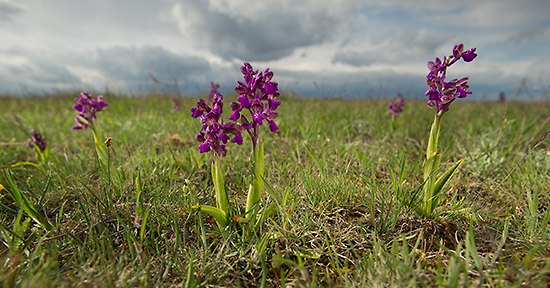
On our first day, with visits to Orkeny and Ocsa, we were accompanied by Sándor Bérces, who was of great help in showing us the right habitats and places.
Orkeny and its Tiger Beetles
We started this spectacularly hot spring day (27 °C!) in the dry sandy and loess puszta around Orkeny. The day started with findings of two spectacular Pannonian endemics: Cicindela soluta pannonica and Dorcadion (Pedestredorcadion) decipiens.
Under here an image of Cicindela solute pannonica, in its typical habitat: short grazed dry steppe with a combination of grassy areas and bare soil.
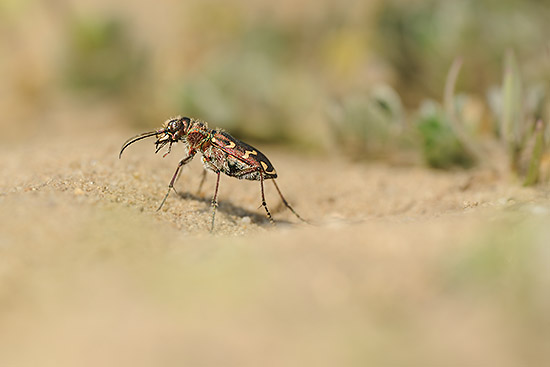
Ecological background: Cicindela soluta pannonica is a rare Tiger Beetle species, which is a restricted range endemic of the Pannonian steppe. It is found in the dry steppe and loess steppe in Hungary and Austria. The reason for its rarity is that most of its habitat, the loess steppe has been converted into agricultural land. The species prefers sparsely vegetated areas with a combination of short grasses and bare soil. It avoids large areas with no vegetation at all, such as large bare sand-dunes. It is a very early spring species, which - despite its highly localised character – can be locally numerous.
The latter was the case in a specific area in Orkeny: in a small area of about half a hectare I found at least about 30 individuals. As it was very hot, the beetles were very shy and quick, so I spent about two hours crawling slowly towards the beetles and avoiding to make shadow above them. This or a to abrupt movement would make them fly a few tens of metres away. The hot temperature has the advantage that all the beetles are active, so you can easier find them. The disadvantage is that one needs more patience and time to approach them…
On the image under here one sees a typical position of tiger beetle during the hottest moments of the day: alert and with the body high above the ground.
The relatively long legs from the tiger beetle have a double goal: first of all to develop speed when hunting for prey, but also for thermoregulation. When it gets very hot, the bare soil warms up quickly, and then the tiger beetles uses its long legs to keep its body far above the hot sand.

Under here, two extra images of the Cicindela soluta. The second image was made by burying my camera a little deeper in the sand, which causes a blurry filter effect at the bottom of the picture. My purpose was to obtain a more abstract image, with no more details at all of the environment.
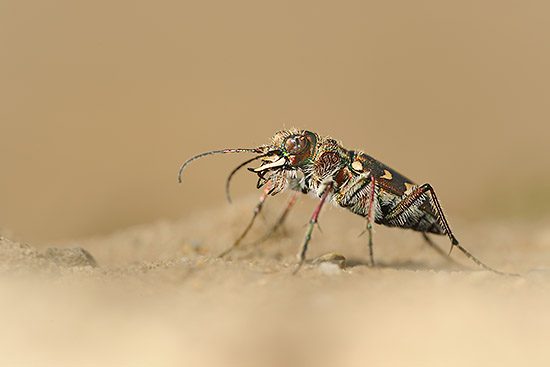
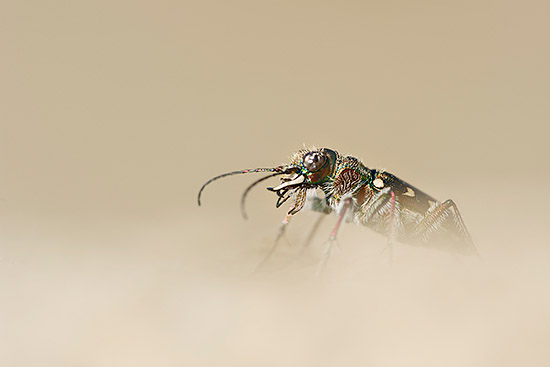
In the same area, we found Dorcadion decipiens to be quite numerous. This ground dwelling Longhorn beetle species occupies the same habitat as the Cicindela soluta and has the same restricted range in the dry Pannonian steppes. Under here, some image of this very well camouflaged Longhorn Beetle.

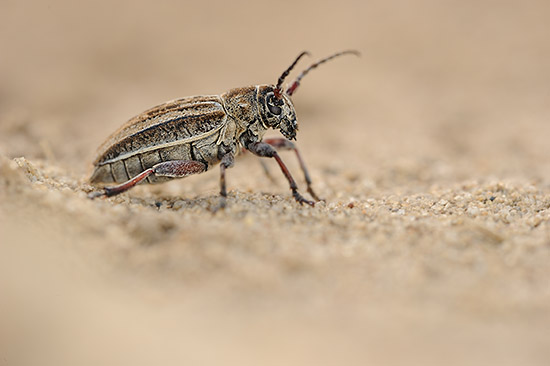
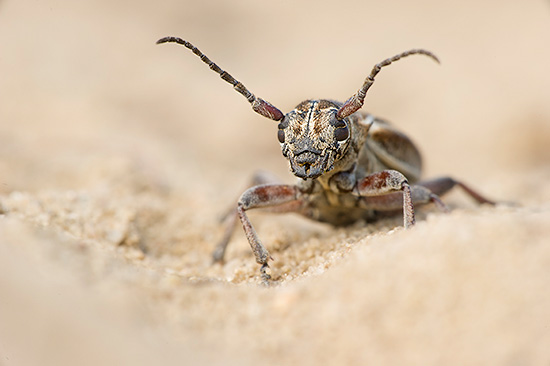
In another area of Orkeny, we visited an open sand dune with large areas of bare soil. Here the most common Tiger beetle was apparently Cicindela littoralis ssp. nemoralis. In Europe it is mainly a coastal species found along the wet sandy shores of southern Europe. However in Austria and Hungary the species can be found on dry inland dunes in the steppe as well. In this habitat they prefer large areas without any vegetation.
Under here, some images from Cicindela littoralis.

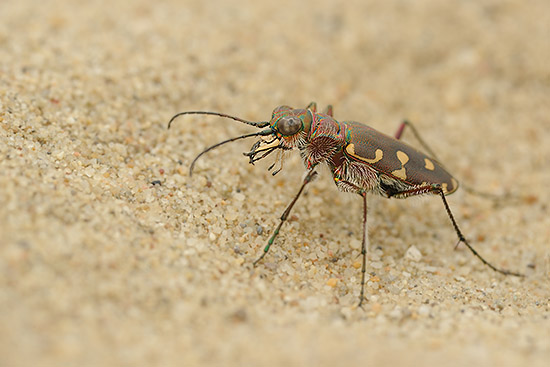
In the same area, a more common Tiger Beetle species - Cicindela hybrida – was also present. Under here, two images form Cicindela hybrida. The beetle was less numerous in this area than Cicindela littoralis, maybe because it was still the beginning of its activity season. On the first image one can clearly notice again his thermoregulation strategy: the sun was gone and temperature had cooled down a bit, so the tiger beetle was hunting from a lower position.
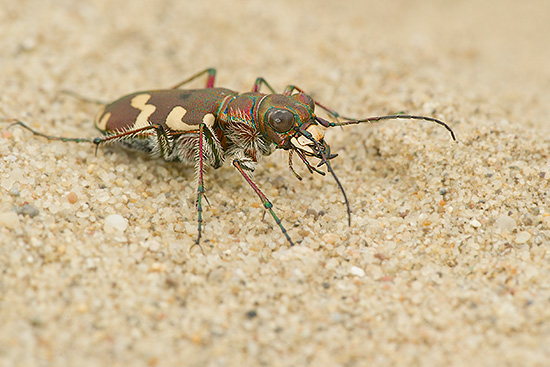

Ocsa and the Carabus clatratus ssp. auraniensis
In the late afternoon we visited a natural alluvial forest dominated by European Ash. Normally the area is very wet, but because it almost didn’t rain during the past months, the forest was unusually dry. The place is known to be a good spot for three Carabus species: Carabus clatratus, cancellatus and granulatus. After about an hour of intensive searching under logs and under the bark of trees we had only found one live specimen of Carabus granulatus. We came across a few dead specimens of Carabus clatratus and cancellatus. I was starting to fear that the unusual drought might be a problem for the carabid activity and that maybe many specimens could have died because of the lack of suitable wet places and prey. Then Sándor suggested to change our strategy: we would leave the path and walk as far as possible inside the forest towards the lowest parts of the alluvial forest. Soon we found out that the soil was still wet under the logs and we came across more snails (potential carabid prey). After about ten minutes I found one Carabus clatratus and one cancellatus hidden under the same log. Finally rewarded! Within the forthcoming half an hour we found a few more Carabus cancellatus and granulatus specimens in the same area.
Under here, an image of the most common species we came across: the eurytopic and widely distributed Carabus granulatus.
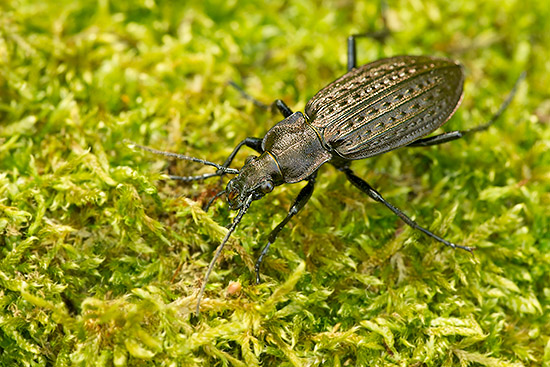
Under here, a nice specimen of the spectacular Carabus clatratus. The specimens in Austria and Hungary belong to the subspecies auraniensis, who have a very dark green to almost blackish colour, contrasting superbly with the golden depressions on the shields.

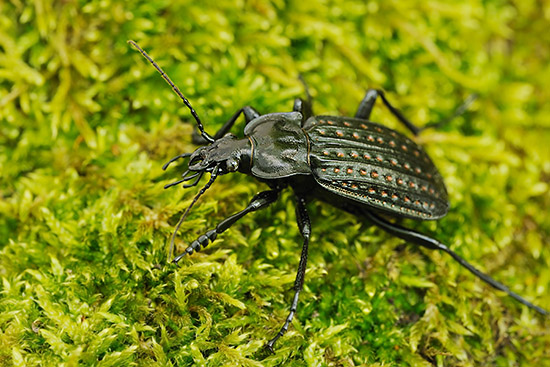
Ecological background: on the contrary to the populations in Western Europe, the populations of Carabus clatratus in Hungary are mainly found in forest habitat. The West-European populations occur in wet heath, bogs and moors, often in the close vicinity of fens. In Hungary Carabus clatratus auraniensis is found in old alluvial and hardwood forests, with a rich structure and a lot of dead wood, in which the adults spend the winter.
Under here, an image of a male Carabus cancellatus ssp. tibiscinus.

The individual on the image belongs to the red-legged form, the so called 'rufofemoral' form. In Hungary the rufofemoral populations are encountered frequently in the wet habitats from the lowlands. On Ocsa the entire population seems to be ‘rufofemoral’. Under here, two images of a female.

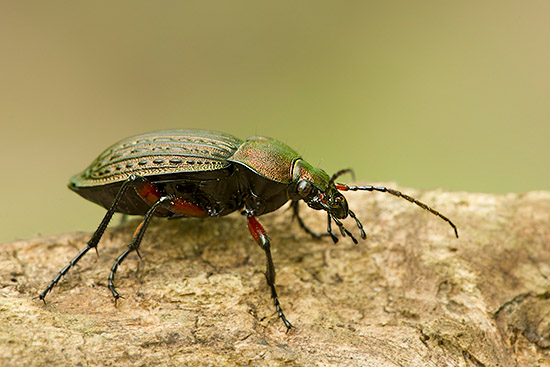
Special thanks to Sándor Bérces for his pleasant company on our trips in Orkeny and Ocsa and for his very useful information about interesting sites to visit. Without his help many of the images would not have been possible to achieve.
